
Subscapularis management during open Latarjet procedure: does subscapularis split versus tenotomy matter? A systematic review and meta-analysis

We found that at Sports Surgery Clinic the 90-day complication rate with a low revision rate. Hematomas were the most common complication experienced by patients who underwent the Latarjet procedure, while there was no recurrent instability or neurological or hardware complications reported among the 441 patients included in this study.
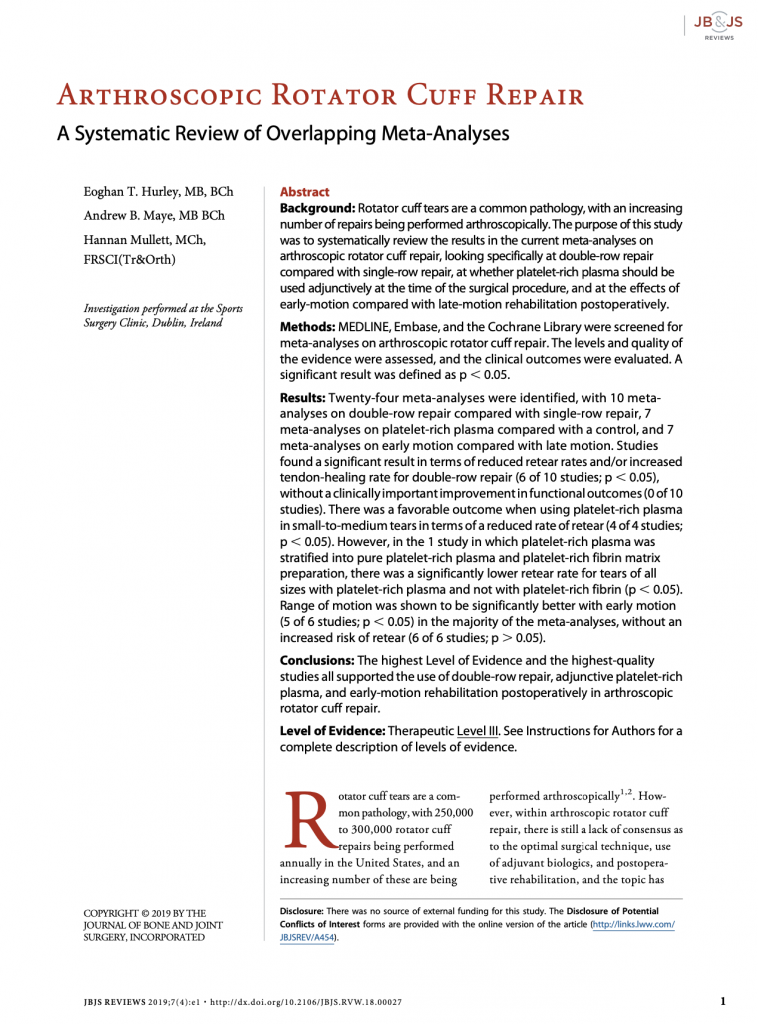
In this meta- analysis study we concluded that the studies all supported the use of double-row repair, adjunctive platelet-rich plasma, and early-motion rehabilitation postoperatively in arthroscopic rotator cuff repair.

Our study found that biceps tenodesis resulted in higher rates of patient satisfaction and return to sport in the studies published in the literature and that biceps tenodesis and SLAP repair resulted in similar functional outcome scores.
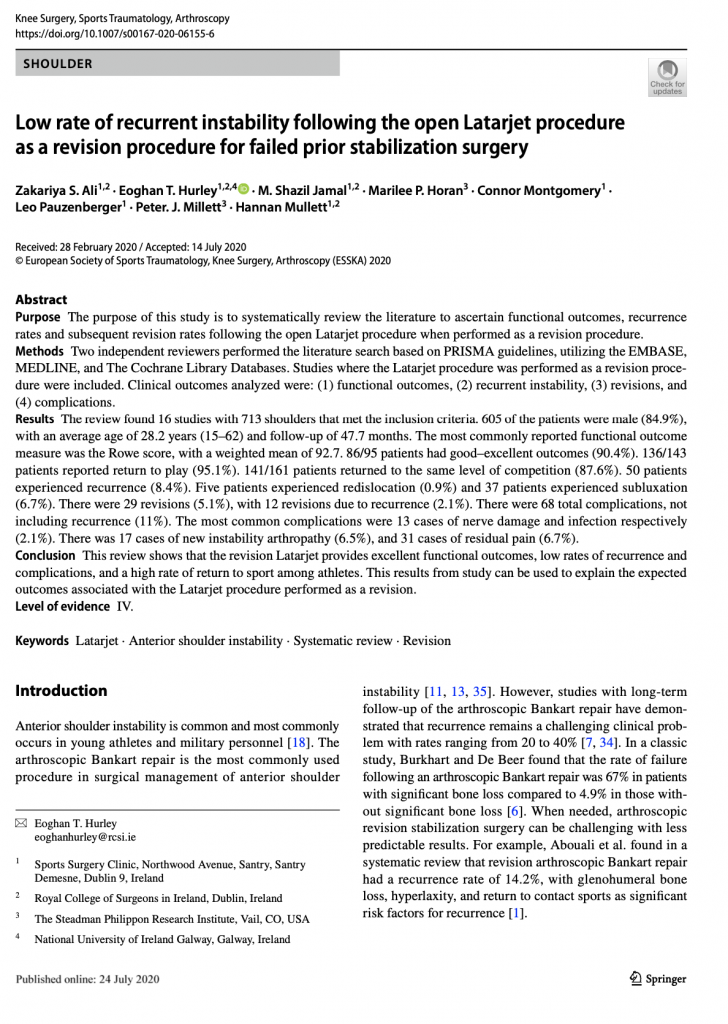
IN this meta analysis study of 16 studies with 713 shoulder we looked at the result of the Latarjet procedure used as a revision procedure for patients who had instability following previous stabalisation surgery. We found that there was low rates of further instability and complications and a high rate of return to sport.. We performed this study with our colleagues at The Steadman Research Institute,Vail,CO, USA .
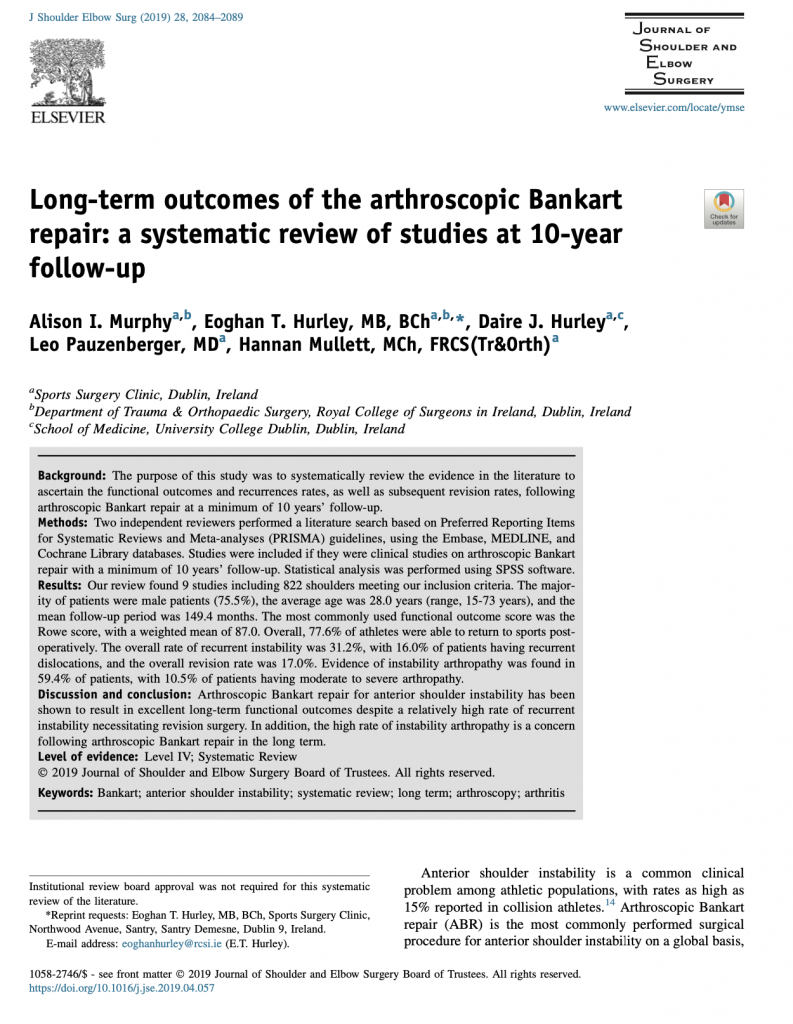
In this review of 9 studies including 822 patients we looked at the long term results of arthroscopic (keyhole surgery) repair of shoulder instability. The reults showed good return to function and sport but there was a significant rate of recurrent dislocation requiring further surgery. We recommend arthroscopic surgery in patients who do not have significant bone damage and in this group the results are very good in our experience .
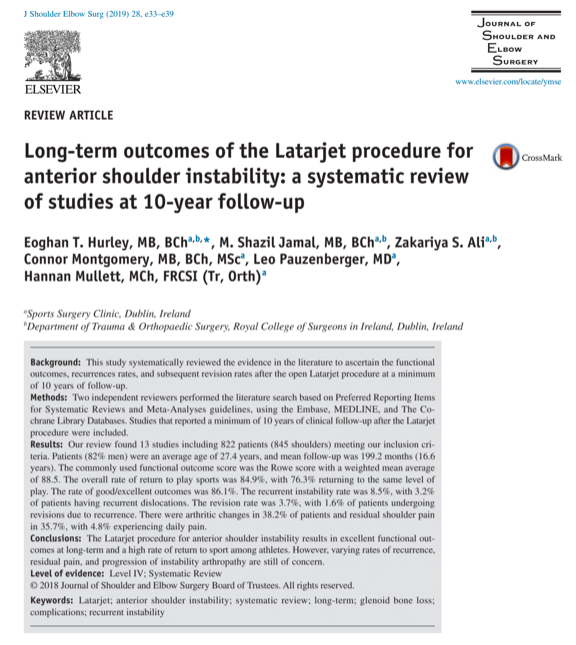
The Latarjet procedure for anterior shoulder instability results in excellent functional out- comes at long-term and a high rate of return to sport among athletes. However, varying rates of recurrence, residual pain, and progression of instability arthropathy are still of concern.
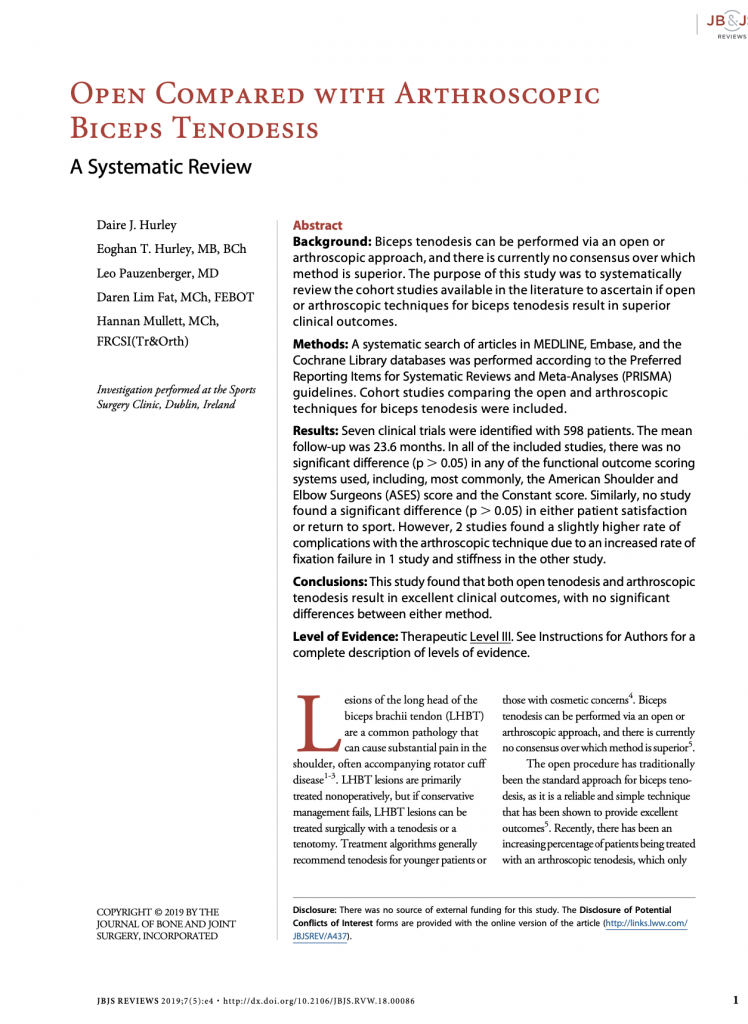
In this meta analysis study of 7 clinical trials including 598 patients we compared arthroscopic (keyhole) versus open biceps tenodesis . We found that both techniques had excellent clinical outcomes with no differences between either method
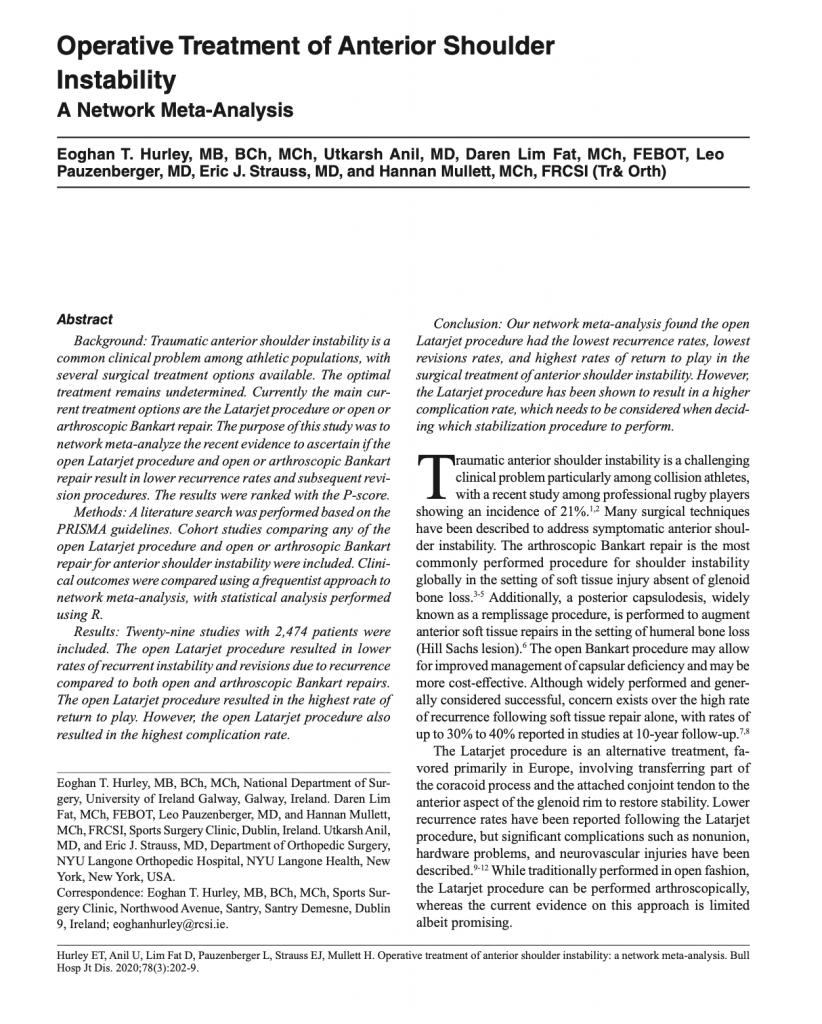
Our network meta-analysis found the open Latarjet procedure had the lowest recurrence rates, lowest revisions rates, and highest rates of return to play in the surgical treatment of anterior shoulder instability. However, the Latarjet procedure has been shown to result in a higher complication rate, which needs to be considered when decid- ing which stabilization procedure to perform.
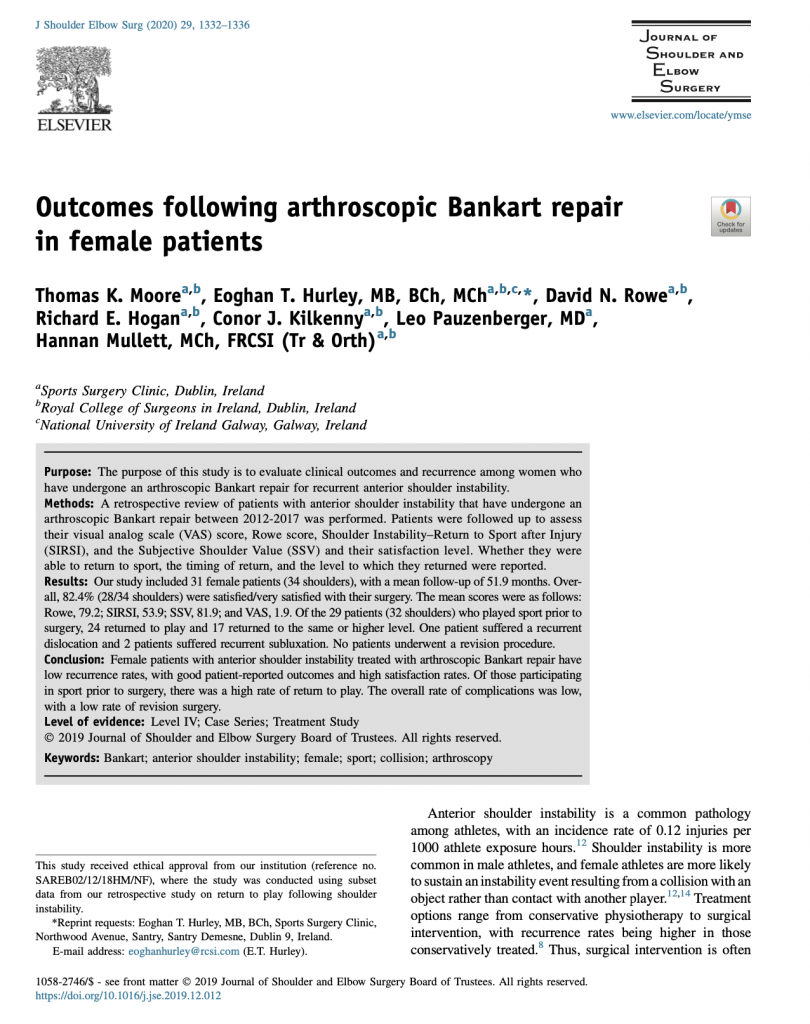
In this study we looked at 34 shoulders of female patients we had operated on .Female patients with anterior shoulder instability treated with arthroscopic Bankart repair have low recurrence rates, with good patient-reported outcomes and high satisfaction rates. Of those participating in sport prior to surgery, there was a high rate of return to play. The overall rate of complications was low, with a low rate of revision surgery
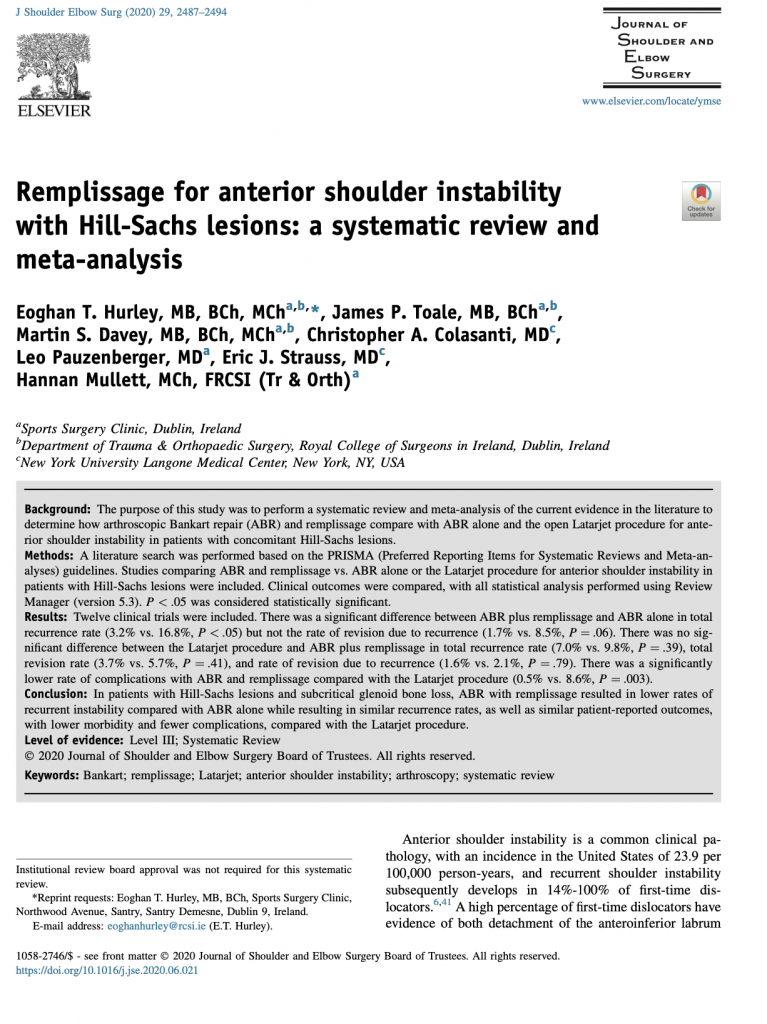
We reviewed 12 papers which included patients who had had a remplissage procedure in addition to arthroscopic labral repair for shoulder instability. All of the patients had a Hill Sachs lesion . We found the addition of the remplissage reduced the risk of redislocation in this group
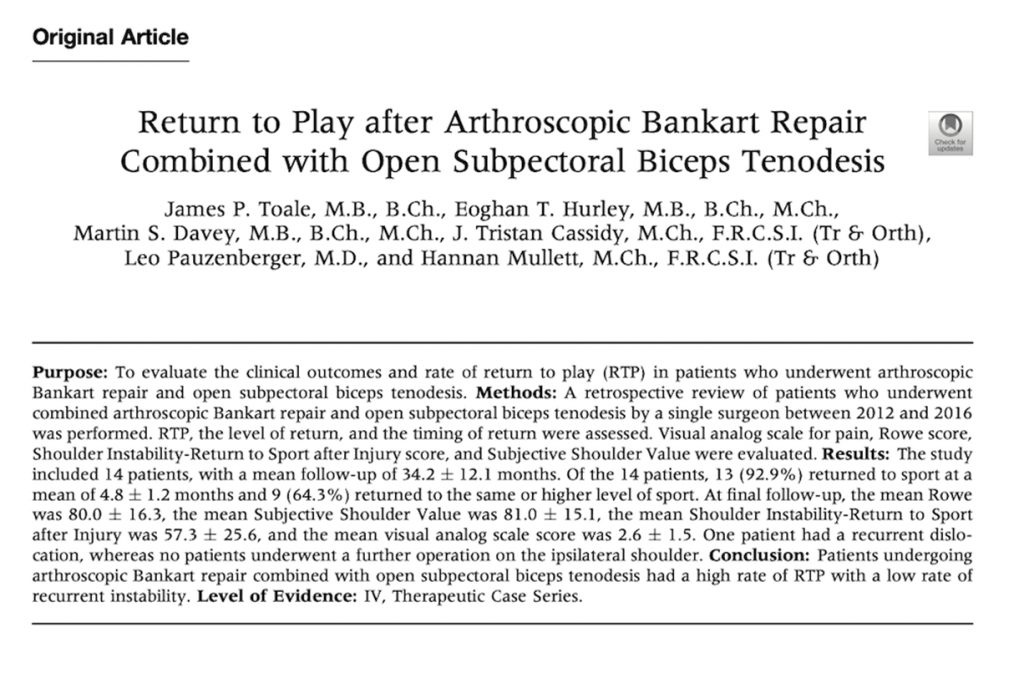
We looked at a group of patients where we had performed arthroscopic stabalisation in combination with a subpectoral tenodesis .Patients undergoing arthroscopic Bankart repair combined with open subpectoral biceps tenodesis had a high rate of return to play with a low rate of recurrent instability.
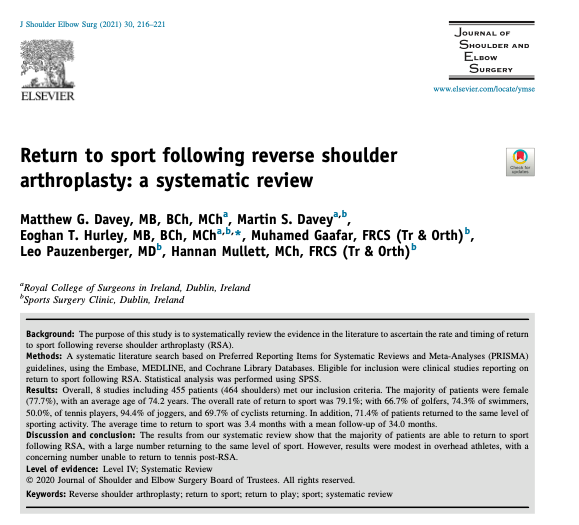
In this meta-analysis of return to sport following reverse geometry shoulder replacement we demonstrated a high rate of return to play in a group of generally older patients ( average 74.2 years). Patients generally got back to golf, cycling, jogging with a lower rate (50%) getting back to overhead soprts such as tennis

We performed a randomized control trial to look at the effect of a simple safe drug ( tramexamic acid- TXA) on the effect on pain and bleeding following Latarjet procedure ( type of shoulder stabalisation) .
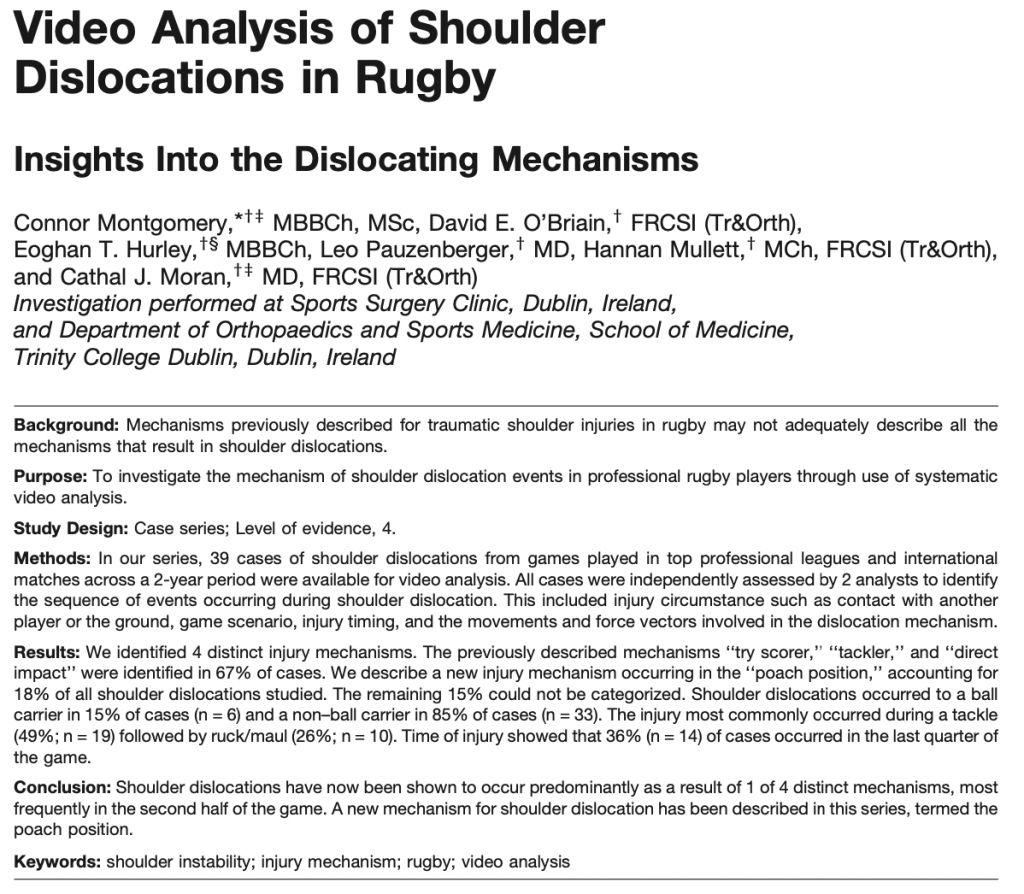
In this paper we analysed the mechanism of injury sustained by rugby players. We sourced videos involving elite rugby players.We identified 4 distinct injury mechanisms. The previously described mechanisms ‘‘try scorer,’’ ‘‘tackler,’’ and ‘‘direct impact’’ were identified in 67% of cases. We describe a new injury mechanism occurring in the ‘‘poach position,’’ accounting for 18% of all shoulder dislocations studied.
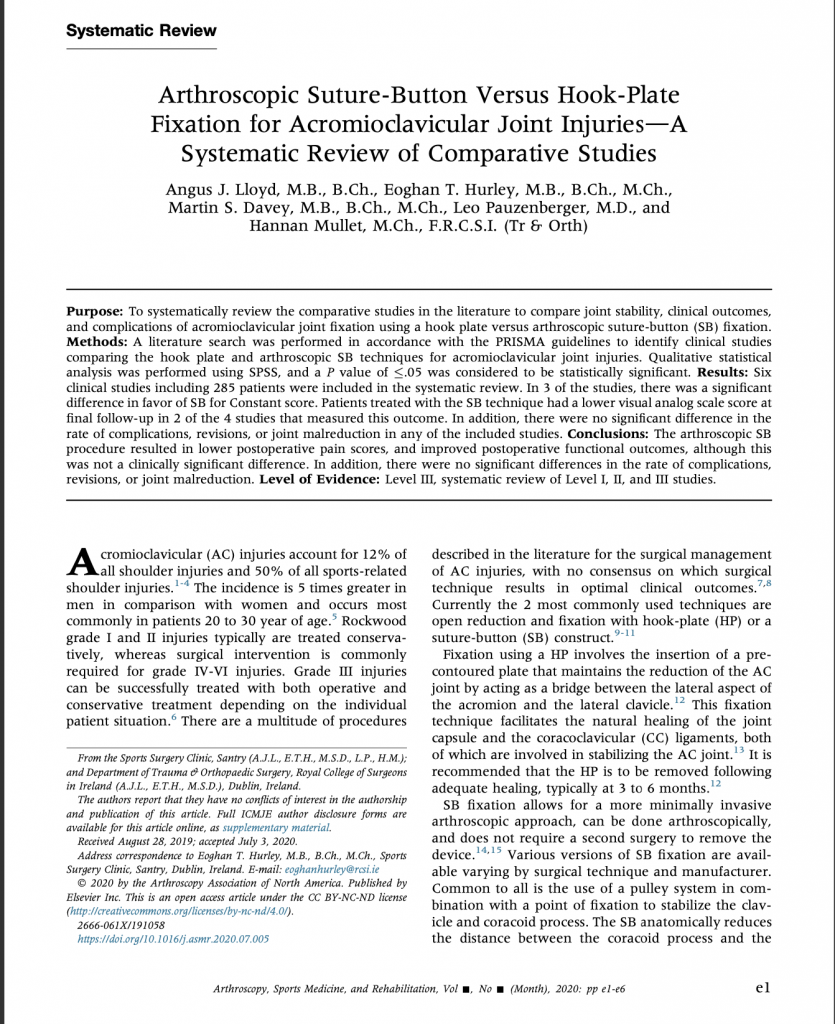
In this review article including 6 studies we compared the use of an arthroscopic suture button technique to hook plate technique in the treatment of acromioclavicular dislocations. We found the arthroscopic suture button techniques was better in terms of better postoperative pain and function with no difference in complication rates .
